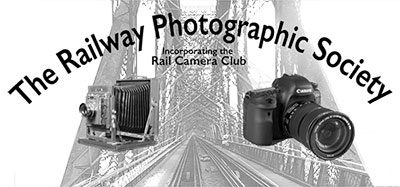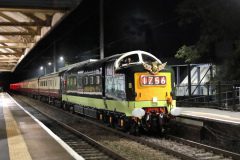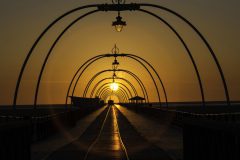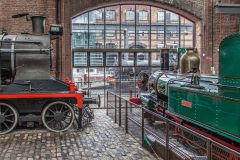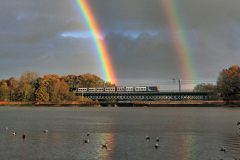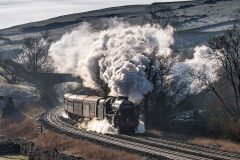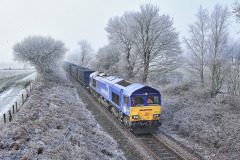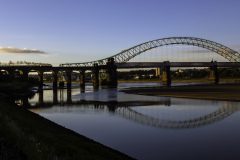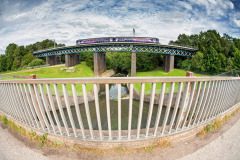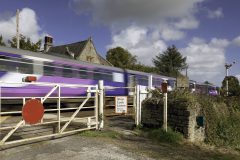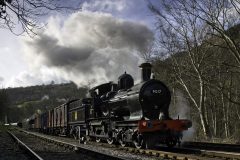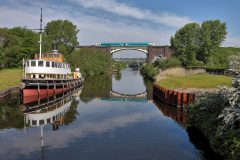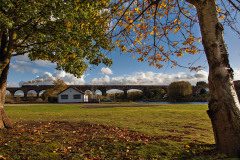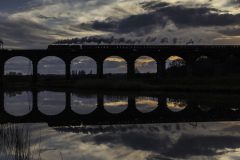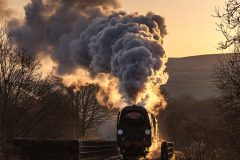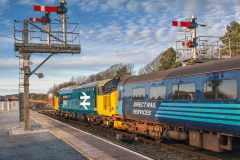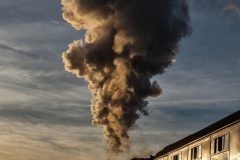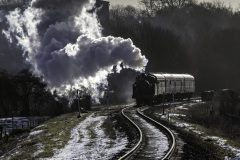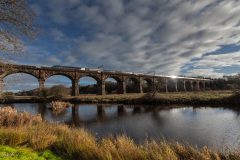About Brian Dobbs
Like others my interest in railway photography was borne out of “trainspotting days” as an adjunct to just taking down numbers. Both these activities have resulted in lifelong friendships. A youngster at the time, my first camera, a Christmas present, was followed by a fixed lens Halina 35X. My photographic exploits with both of these cameras were not a success, unsharp images, under and overexposed negatives, mostly due to inexperience and the lack of decent shutter speeds to arrest movement. Such was my disappointment with the results that I put the cameras away, and my desire to take photographs would have to wait for better equipment to come along.
Joining industry gave me the opportunity to save up for a newer camera, and I purchased an Olympus OM1 with Zuiko 50mm f1.8 lens, followed by additional lenses. Certainly, the image quality from this combination was a leap ahead from what I had been used to, but the overall results, composition wise, were just as disappointing. I really was on the bottom of a learning curve so joined the local camera club. Viewing other members work, and akin advice about composition and presentation was a major step forward, and I took a leap of faith and invested in my own darkroom equipment as I entered this new photographic world. Developing black and white film after a day’s photography and printing the resulting images was entering into the unknown insofar as getting the image I had hoped to capture. Disappointments were many, but the odd satisfactory image did emerge from the countless endeavours. Railway photography was, and is, never easy !
I soon realised that large prints require a bigger negative so moved over to medium format photography with the purchase of a Mamiya 645 for monochrome work with the Olympus retained for colour slides. A second Mamiya was purchased some time later as I moved over completely to medium format. I upgraded later to a Pentax 6×7 for monochrome work with Kodak Tri-X film. My all time favourite colour transparency film, Fuji Velvia, was loaded into the Mamiya, and both these cameras gave stirling service until I migrated to the digital platform, again another very steep learning curve to climb.
My railway photographic inspiration has come from many quarters, notably so from viewing the superb black and white images taken by the leading railway photographers of the day and published in old issues of Trains Illustrated and Railway World. Carrying around plate cameras, heavy tripods and bags of glass negatives was a feat in itself, but the wonderful and stirling images taken by those gentlemen are a salute to their perseverance and artistry. Many of these images are classics of their time and, indeed, are of historical importance in that they record the passing of a time when the railways were perhaps seen as more romantic than just a service industry. In the sixties I purchased a copy of Colin Gifford’s “Each a Glimpse.” a photographic essay that moved away from the established convention for recording the railway as it was then. This work is as much a record of the social history of the period as well as a documentary of the loss of the steam age. I don’t have a particular “style”, I just enjoy picture taking, and with the advent of digital photography there is increased scope for experimentation more so than in film days. I guess success is in the eye of the beholder and the resulting images can sometimes be controversial. The art of railway photography has moved on in leaps and bounds, and today I also find great pleasure in viewing some off the stunning pictures from all the active railway photographers who continue to record the ever changing scene. It is a delight to see new photographers coming along, that will be inspired, and continue to excite with new techniques and imagery.
Brian Dobbs, May 2022
All images in this gallery ©Brian Dobbs
